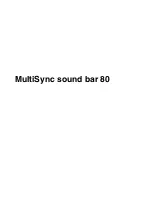
ENUK - V1.4 - 25/01/17
35
4000 Series GSM Audio Intercom - Technical Manual
4000 Series GSM Audio Intercom with Proximity
Programming the GSM Intercom
SET AUXILIARY OUTPUT AO1 TIME (A1T, FOR A1M = 01 ONLY)
The auxiliary output AO1 time can be set from 01 - 99 seconds or latching (set the AO1 output time to 00 for latched mode. In latch
mode the AO1 output will stay triggered until the relevant command is sent again to unlatch the AO1 output. This option is only
available when the AO1 output mode,
A1M
, is set to mode 01. Please refer to the
A1M
commands below for more details).
1111A1Tnn
Store the AO1 time nn = time in seconds (e.g. nn = 05, time = 5 seconds).
1111A1Tnn?
Store the AO1 time nn = time in seconds. Also send a confirmation text back to the sender.
1111A1T?
Query the current stored AO1 time. A text message will be sent back to the sender
showing the stored AO1 time.
SET AUXILIARY OUTPUT AO1 MODE (A1M, MODES 00 - 05)
The auxiliary output AO1 has up to six modes that can be set:
Call Activated: nn = 00
AO1 output will activate when a call begins and deactivate when a call ends. See example on page 21.
User Activated: nn = 01
To activate the AO1 output either short terminals g to 5 (auxiliary 1 input) on the GSM PRO intercom or press 6 on the telephone
during a call. See example on page 21.
Used for Status Indication: nn = 02
When in this mode, the AO1 terminal is used exclusively for monitoring the status of an input. For example, checking if a gate/door
is open or closed. See example on page 22.
Divert Calls to Master Number: nn = 03
When in this mode, the AO1 terminal is used exclusively for monitoring the status of a switched input to decide if calls should be
diverted to the master number or not. See example on page 22.
Call Activate (Timed): nn = 04
AO1 output will activate when a call begins and deactivate when the auxiliary 1 output time (
A1T
) expires. See example on page 23.
Enable/Disable “Dial to Open”: nn = 05
When in this mode, the AO1 terminal is used to enable/disable the dial to open feature via an external C/NO switched input across
terminals AO1 & g, (for example the C/NO relay contacts on a timeclock could be connected across terminals AO1 & g on the GSM
PRO intercom. When the timeclock relay is ON then no dial to open numbers are allowed. The GSM PRO answers the call and awaits
the master code to be entered. When the timeclock relay is OFF all dial to open numbers will operate as normal). See example on
page 23.
1111A1Mnn
Store the AO1 mode nn = 00 - 05.
1111A1Mnn?
Store the AO1 mode nn = 00 - 05. Also send a confirmation text back to the sender.
1111A1M?
Query the current stored AO1 mode. A text message will be sent back to the sender
showing the stored A1O mode.
SET AUXILIARY OUTPUT AO2 TIME (A2T)
The auxiliary output AO2 time can be set from 01 - 99 seconds or latching (set the AO2 output time to 00 for latched mode. In latch
mode the AO2 output will stay triggered until the relevant command is sent again to unlatch the AO2 output).
1111A2Tnn
Store the AO2 time nn = time in seconds (e.g. nn = 05, time = 5 seconds).
1111A2Tnn?
Store the AO2 time nn = time in seconds. Also send a confirmation text back to the sender.
1111A2T?
Query the current stored AO2 time. A text message will be sent back to the sender
showing the stored AO2 time.
SET DAYS TO WAIT BEFORE MAKING A CALL (NOD)
I
n the event the GSM PRO intercom panel is not used for long periods of time it could be possible that the network disconnects it. To
prevent this from happening it is possible to program a time period (from 01 – 99 days or disabled 00) to wait before the intercom
panel makes a short call to refresh the connection to the network. This time period is reset after each call made on the system and
will only happen if the full time period elapses without any incoming or outgoing calls.
















































